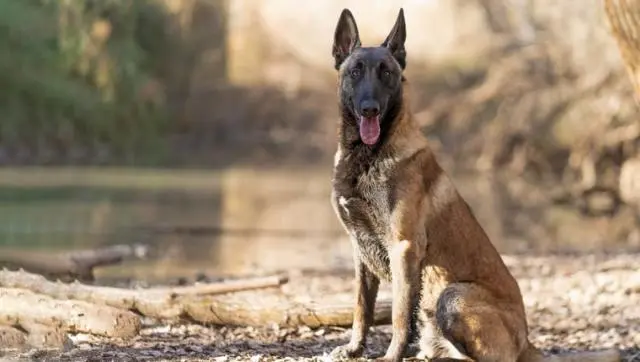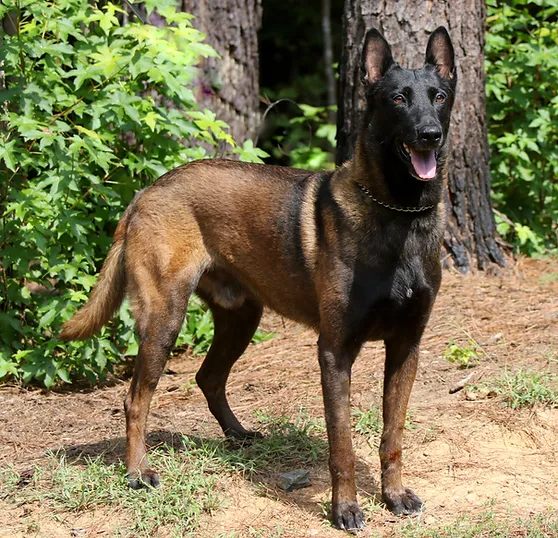
Introduction
The Belgian Malinois, often referred to as the “Mal,” is a breed that has captured the hearts of dog enthusiasts worldwide. Known for their exceptional intelligence, unwavering loyalty, and impressive working abilities, the Belgian Malinois has gained popularity in various fields, from law enforcement to competitive dog sports. In this article, we will delve into the fascinating world of the Belgian Malinois, exploring its history, physical characteristics, temperament, working roles, and more.
A common question in our circles is: Are Belgian Malinois Difficult to Train? A lot of people seem to have some pretty big misconceptions about what this breed is, and while it is not something too difficult not many people know all the details, so in this article we’re going to cover this and more.
If you’re looking to adopt, or buy a new puppy then this article is perfect for you. Throughout this article, we will explore the various aspects of this remarkable breed, shedding light on why it has become one of the most sought-after working dogs in the world.
History and Origins

The Belgian Malinois is one of four varieties of Belgian Shepherd dogs, which also include the Tervuren, Laekenois, and Groenendael. These dogs were initially bred for herding and guarding livestock, but their exceptional skills soon caught the attention of the Belgian military and police forces.
The breed’s name, Malinois, is derived from the city of Malines, located in the Flemish region of Belgium. It was in this region that the breed was developed and refined. The Malinois was selectively bred for its intelligence, agility, and endurance, making it an ideal working dog.
During World War I, the Belgian Malinois played a crucial role as a messenger and ambulance dog on the front lines. Their bravery and loyalty were recognized, and their reputation as a reliable working dog spread beyond the borders of Belgium.
In the years following the war, the Malinois gained popularity in various working fields, including police work, search and rescue, and as service dogs. Their exceptional scent detection abilities, high energy levels, and eagerness to please made them highly sought after by law enforcement agencies around the world.
Today, the Belgian Malinois continues to excel in various roles, including police and military work, search and rescue operations, competitive obedience, and agility trials. They are known for their intense drive, focus, and unwavering loyalty to their handlers.
The breed’s popularity has soared in recent years, thanks in part to their appearances in movies and television shows. However, it is important to note that the Belgian Malinois is not a breed suitable for every owner. They require a dedicated and experienced handler who can provide them with the mental and physical stimulation they need.
Physical Characteristics
Originating from Belgium, this medium-sized breed is highly regarded for its agility, strength, and overall athleticism. With a well-muscled body and a confident stance, the Belgian Malinois exudes an aura of power and grace.
One of the most notable physical features of the Belgian Malinois is its coat. The breed has a short, dense, and weather-resistant double coat that provides protection in various climates. The color of the coat can range from rich fawn to mahogany, with a black mask and ears. This distinctive coloration adds to the breed’s allure and gives it a regal appearance.
The Malinois has a well-proportioned body, with a deep chest and a strong, muscular neck. Its head is elegant and chiselled, with a moderately pointed muzzle and dark, almond-shaped eyes that radiate intelligence and alertness. The ears are triangular and erect, contributing to the breed’s attentive and focused expression.
In terms of size, the Belgian Malinois typically stands between 22 to 26 inches (56 to 66 cm) at the shoulder and weighs around 55 to 75 pounds (25 to 34 kg). This medium-sized build allows the Malinois to excel in various physical activities, including agility trials, obedience competitions, and working roles such as search and rescue, police work, and military service.
This breed possesses a well-developed musculature, which enables it to move with speed, agility, and endurance. Its gait is smooth and effortless, reflecting its natural athleticism. This breed is known for its boundless energy and requires regular exercise to maintain its physical and mental well-being.
Its striking physical characteristics, including its well-muscled body, regal coat coloration, and confident stance, make it a visually captivating breed. Combined with its athleticism and endurance, these physical attributes contribute to the Malinois’ reputation as a versatile working dog and a beloved companion.
Temperament and Personality

Originally bred for herding and guarding livestock, this intelligent and versatile breed has gained popularity in various fields, including law enforcement, search and rescue, and competitive dog sports. Understanding the temperament and personality of the Belgian Malinois is crucial for potential owners and enthusiasts alike.
One of the most notable characteristics of the Belgian Malinois is its high energy level. These dogs are known for their boundless enthusiasm and stamina. They thrive in active environments and require regular exercise to keep them physically and mentally stimulated. Whether it’s a long hike, a game of fetch, or agility training, the Belgian Malinois is always up for a challenge.
In addition to their energy, Belgian Malinois dogs are highly intelligent and eager to please. They possess a strong work ethic and excel in obedience training. Their intelligence, combined with their natural athleticism, makes them quick learners and adaptable to various tasks. This breed is often used in police and military work due to their exceptional trainability and focus.
While Belgian Malinois dogs are loyal and affectionate towards their families, they can be reserved and aloof with strangers. This natural wariness makes them excellent watchdogs. However, early socialization is crucial to ensure they develop into well-rounded and friendly dogs. Proper training and exposure to different people, animals, and environments from a young age can help them become more accepting and sociable.
Another aspect of the Belgian Malinois’ personality is their strong protective instinct. They are naturally inclined to guard and protect their loved ones. This trait, combined with their intelligence and athleticism, makes them excellent candidates for personal protection and security work. However, it is essential for owners to provide consistent training and guidance to ensure their protective instincts are channelled appropriately.
Conclusion
In conclusion, the Belgian Malinois is undeniably one of the most trainable dog breeds. With their exceptional intelligence, high energy levels, and unwavering loyalty, they possess all the qualities necessary for successful training. Whether it’s obedience training, agility, search and rescue, or even protection work, the Belgian Malinois excels in every field.
Their eagerness to please their owners and their natural drive to work make them highly receptive to training. They thrive on mental stimulation and physical challenges, making them ideal candidates for advanced training tasks. Their ability to quickly learn and retain commands is truly remarkable, and their adaptability allows them to excel in various environments and situations.
The Belgian Malinois’ trainability is further enhanced by their strong bond with their handlers. They are incredibly loyal and form deep connections with their owners, making them highly responsive to training cues and commands. This bond also fosters a sense of teamwork and cooperation, enabling them to work harmoniously with their handlers.
Furthermore, the Belgian Malinois’ versatility is a testament to their trainability. They are not only exceptional working dogs but also make wonderful family pets. With proper socialization and training, they can coexist peacefully with children and other animals. Their natural protective instincts can be channeled appropriately, ensuring a safe and secure environment for their loved ones.
However, it is important to note that the Belgian Malinois’ high energy levels and intelligence require consistent mental and physical stimulation. They thrive in an environment that provides them with ample opportunities to exercise, learn, and work. Neglecting their needs can lead to behavioural issues, such as excessive barking, destructiveness, or even aggression.